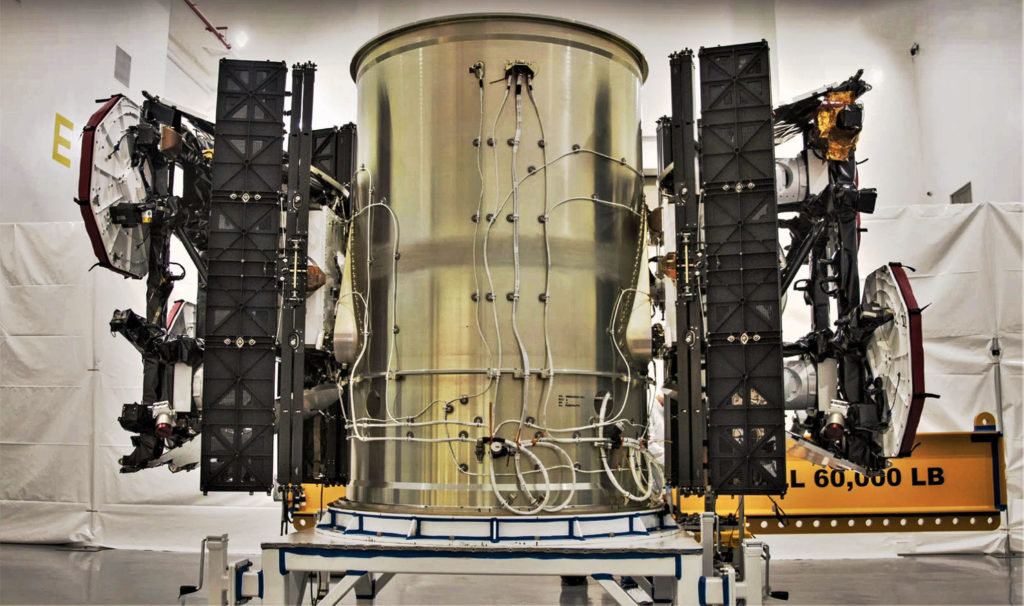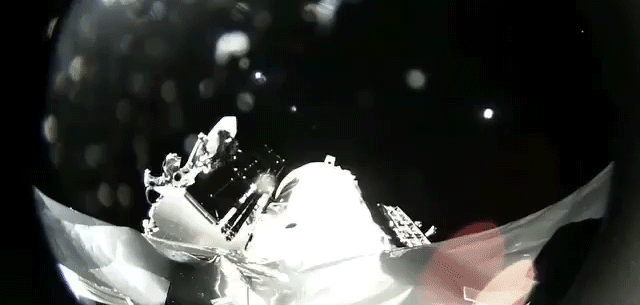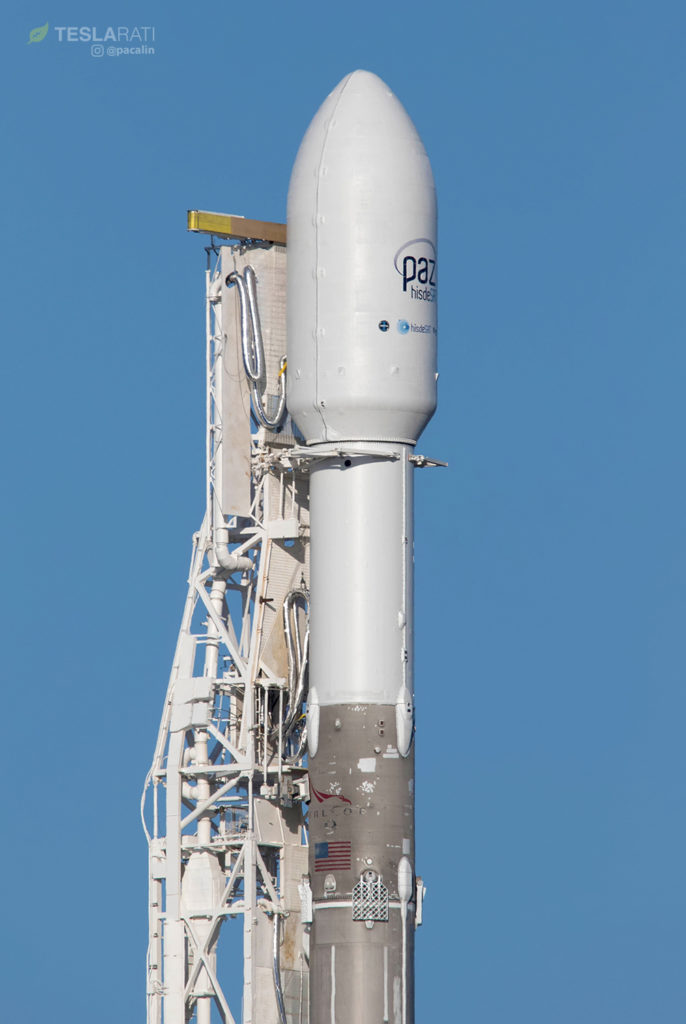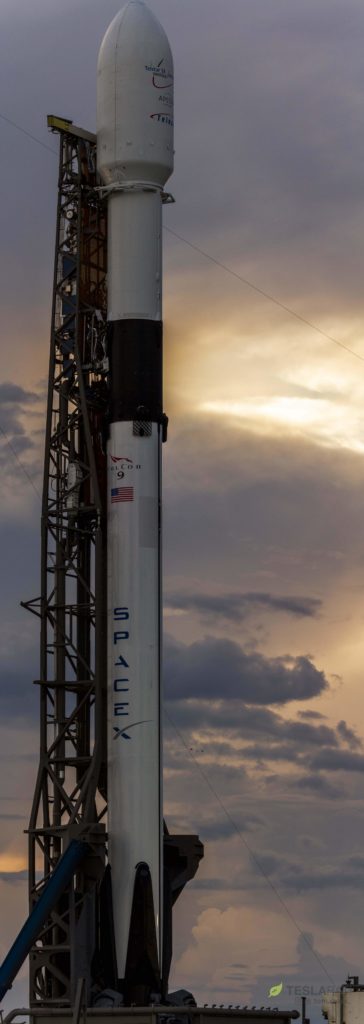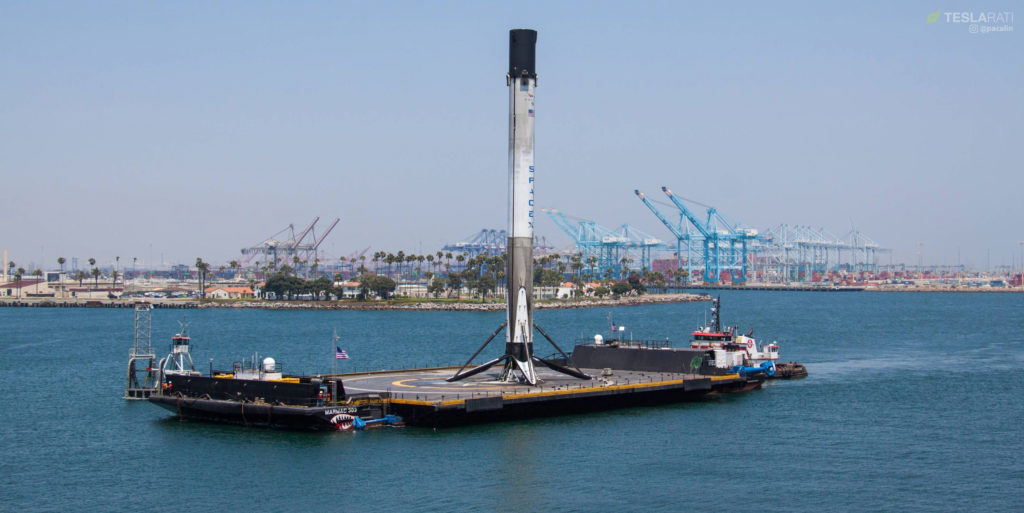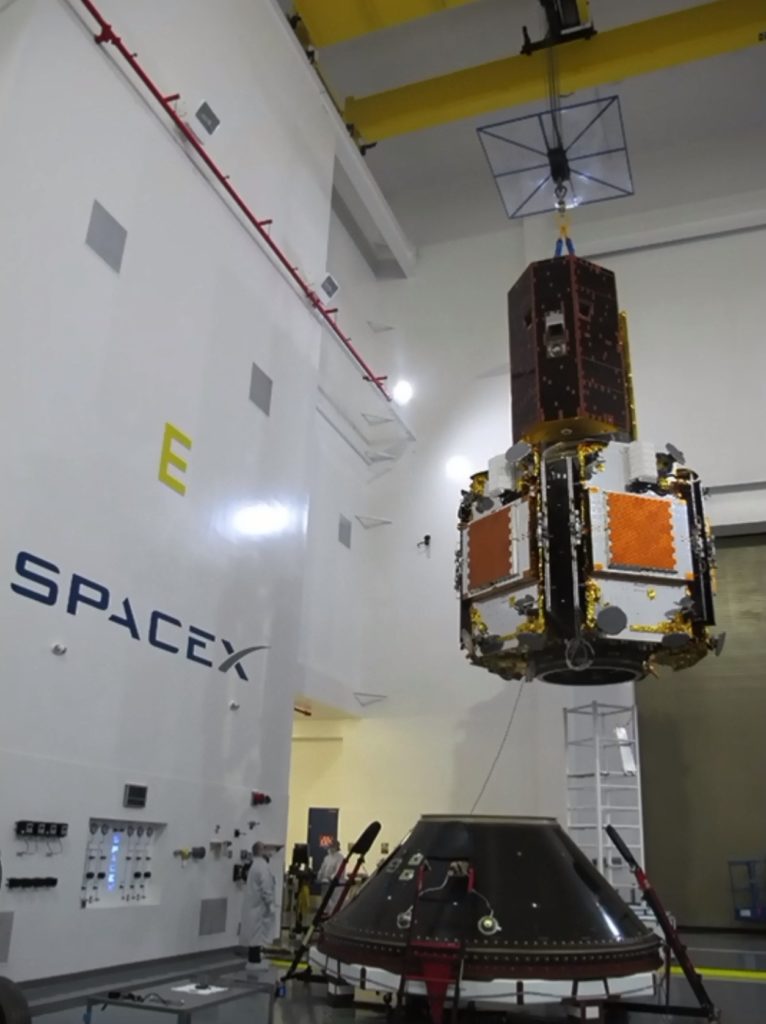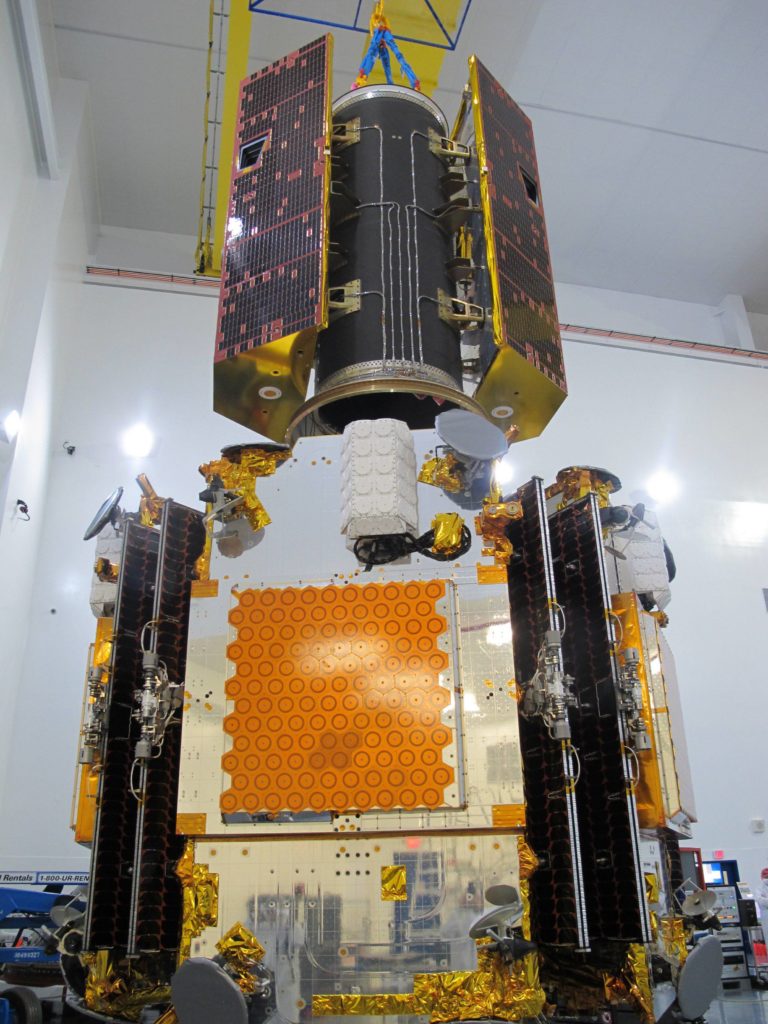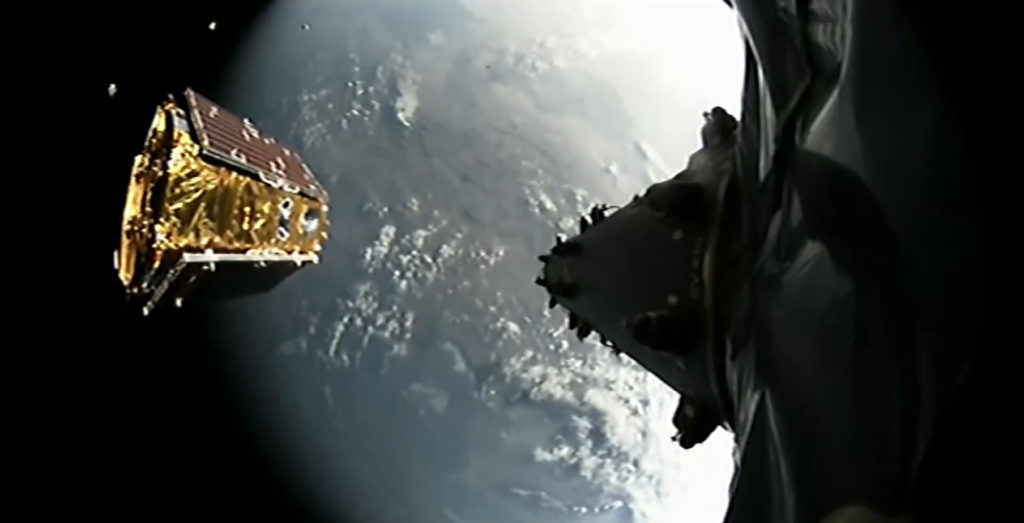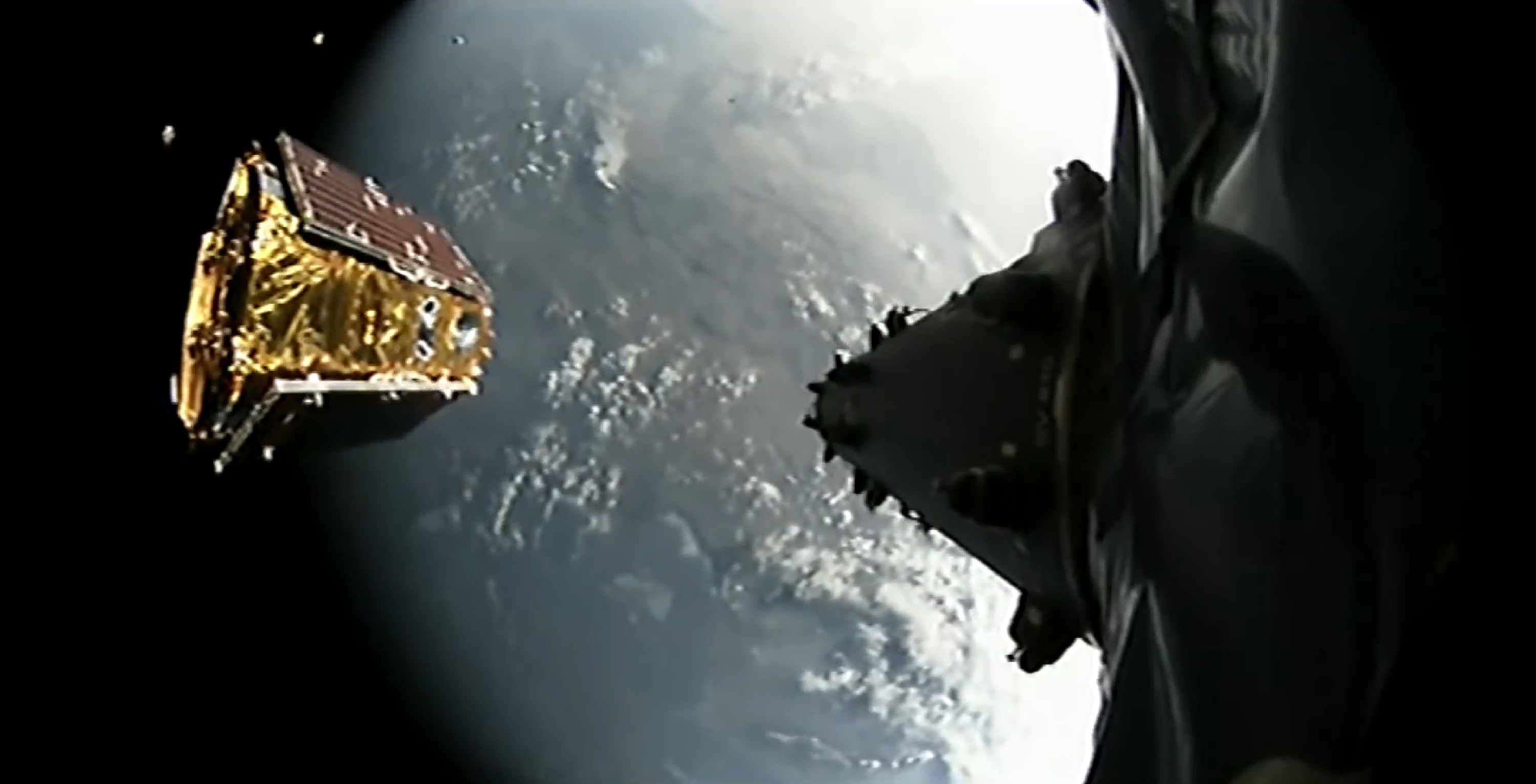

News
SpaceX’s Starlink satellites “happy and healthy” as Elon Musk fires managers and VP
Reuters is reporting that SpaceX’s Starlink internet satellite constellation project experienced significant organizational upheaval earlier this year, triggered by fundamental disagreements between CEO Elon Musk and executives overseeing Starlink as to how exactly SpaceX should approach the complex system’s development.
Despite the report’s primary focus on reorganization and Musk’s decision to simply fire 5+ key executives, SpaceX employees that spoke with Reuters were of the opinion that the two demo satellites – named Tintin A and B – are operating nominally in orbit more than half a year after launch.
The 2 test sats launched in Feb, Tintin A and B, seem to be healthy. "We’re talking with them every time they pass a ground station, dozens of times a day," one employee said. In the first week they streamed "4k YouTube and played ‘Counter-Strike: GO’ from Hawthorne to Redmond."
— Joey Roulette (@joroulette) October 31, 2018
Musk apparently believed that Starlink’s development timeline ought to be far shorter than certain senior executives overseeing the program were planning for. As a result of continuing success with the first two prototype satellites that launched in March 2018, a SpaceX engineer paraphrased Musk as being of the opinion that Starlink “can do the job with cheaper and simpler satellites, sooner.”
Rajeev Badyal, Vice President of SpaceX’s satellite program before being fired by Musk in June 2018, apparently wanted another three full iterations of prototype satellites to be launched and tested prior to beginning serious mass-production and launching the first real batch of Starlink satellites. While his extremely cautious approach may have had undeniable long-term benefits, it would also be a major hindrance in a field now rife with competitors like Telesat, OneWeb, LeoSat, and more, all eager to be first to offer internet services from low Earth orbit (LEO).
- SpaceX’s first two Starlink prototype satellites are pictured here before their inaugural launch, showing off a thoroughly utilitarian bus and several advanced components. (SpaceX)
- One of the first two prototype Starlink satellites separates from Falcon 9’s upper stage, February 2018. (SpaceX)
Prior to joining SpaceX in 2014, Badyal – like dozens of others now working on SpaceX’s Starlink constellation – worked at Microsoft for almost two decades, developing the consumer electronics and software company’s hardware programs (Zune, Xbox, Surface, etc.). In retrospect, it may not come as a huge surprise that a senior hardware development manager at Microsoft might be moderately risk-averse or at least methodical – while Surface and other more modern hardware programs have more functional iterative life cycles (usually annual), Xbox infamously spent nearly seven years between the launch of the Xbox 360 and Xbox One.
On the ground hardware side of Starlink development, user terminals, ground terminals, and other high-volume networking equipment could certainly benefit from someone like Badyal’s extensive experience developing high-volume consumer electronics like Xbox, but the Starlink satellites themselves are a different story. As a technology essentially without precedent, it could ultimately be almost anachronistically expensive to ‘refine’ the design of constellations of hundreds or thousands of high-bandwidth internet satellites before ever actually building and operating such a system.
A clash of approaches – Musk vs. Silicon Valley
What Musk instead seems to prefer – as demonstrated through his strategic direction of Tesla and SpaceX – is an approach where hardware development projects explicitly avoid striving for perfection with the first general iteration of a new system. Tesla did not spend years prototyping and performing limited tests in secret before building Model 3 as their first car ever – high-volume desirable electric vehicles simply did not exist. With SpaceX, Musk chose to explicitly develop a very small operational rocket – Falcon 1 – rather than very tediously attempting to go from scratch to Falcon 9 or BFR.
For Starlink, a Musk-style development program would fast-track a bare-minimum baseline for the satellite constellation and its ground systems, mass-producing and launching hardware that would inevitably be lacking in many ways but would still be able to act as a proving ground for the broader concepts at stake. One step further, the FCC’s Starlink constellation grant depends on an odd but unwavering requirement that SpaceX (or any other prospective LEO constellation-operator) launch at least 50% of all of any planned constellation within six years of receiving a license.
- SpaceX’s first Starlink prototypes launched in late February aboard a flight-proven Falcon 9 booster. (Pauline Acalin)
- Falcon 9 Block 5 will be absolutely critical to the success (and even the basic completion) of Starlink. (Tom Cross)
- B1048 returns to port on drone ship JRTI after its successful July 2019 launch debut. (Pauline Acalin)
For SpaceX, that means that the basic ability to commercially operate Starlink is fundamentally at risk unless the company can somehow launch a minimum of 2213 (and up to ~5950) Starlink satellites between 2018 and 2024, an almost unfathomable challenge. Assuming ~500kg per satellite and perhaps 20 satellites per Falcon 9 launch, completing 50% of Starlink by 2024 would demand – without interruption – a minimum of one launch every two weeks for five years, mid-2019 to mid-2024. As such, every month spent prototyping and refining can essentially be viewed as a month where SpaceX didn’t launch dozens of Starlink satellites in pursuit of initial operational capabilities.
The news coming from Reuters’ reporting is ultimately a very positive look at Starlink, aside from Musk’s characteristically brusque and uncompromising approach to program management and leadership. Employees spoke proudly of the operational health and overall success of the two Tintin satellites already on orbit, noting that “they’re happy and healthy [and functioning as intended], and we’re talking with them [dozens of times a day] every time they pass a ground station”. Contrary to tenuous evidence to that suggested one of the two satellites had suffered an anomaly, preventing it from operating its electric thrusters, it appears that both satellites are doing just fine.
- SpaceX is already fairly experienced with launching multi-satellite missions and building custom payload adapters. (NASA)
- During a normal Iridium NEXT launch, two groups of five satellites are stacked on top of each other. Here, the top stack was replaced by NASA/DLR’s GRACE-FO spacecraft. (NASA)
- A spectacular view of Iridium NEXT satellites during orbital deployment. Starlink deployment will be even more of a spectacle. (SpaceX)
Up next for Starlink is the launch of a second batch of demonstration satellites, expected to occur “in short order” according to an official SpaceX comment on the matter.
“Given the success of our recent Starlink demonstration satellites, we have incorporated lessons learned and re-organized to allow for the next design iteration to be flown in short order.” – SpaceX spokesperson Eva Behrend
Musk’s ultimate hope with this reorganization is to push Starlink to begin operational satellite launches as early as mid-2019, an ambitious goal to say the least. Understandably, the intent with such an expedited schedule would be to continuously modify, update, and improve Starlink satellite, terminal, and network designs at the same time as they are being built and operated. Much like SpaceX and Tesla, this helps to ensure that the ultimate result of development is a rapid initial product offering eventually followed by a highly-optimized ‘finished’ product.
For prompt updates, on-the-ground perspectives, and unique glimpses of SpaceX’s rocket recovery fleet check out our brand new LaunchPad and LandingZone newsletters!
Elon Musk
Elon Musk confirms Grok 4 launch on July 9 with livestream event
The rollout will be accompanied by a livestream at 8 p.m. Pacific Time.

Elon Musk has officially confirmed that Grok 4, the latest version of xAI’s large language model, will launch on July 9. The rollout will be accompanied by a livestream at 8 p.m. Pacific Time, hosted on xAI’s official account on X.
xAI goes straight to Grok 4
Back in May, leaks indicated that xAI was getting ready to ship Grok 3.5. Considering Musk’s recent comments, however, it appears that the artificial intelligence startup would be focusing on the large language model’s fourth iteration instead. As noted in a Financial Express report, users on X have sighted references to Grok 4 in the lead up to the update’s launch, such as “grok-4-prod-mimic” and “Grok 4 Code.”
Musk’s Grok 4 announcement comes as AI competition intensifies between major players including OpenAI, Google, and xAI. With Musk’s Colossus supercomputer fully operational in Memphis, xAI appears to be accelerating its AI product roadmap.
Musk pushes Grok toward political neutrality
Grok 4’s launch also follows a recent controversy involving political bias, as noted in a CNN report. Last week, Grok responded to a user on X stating that political violence in the U.S. since 2016 had come more from the political right than the left. The chatbot noted in a later reply that its answer was based on information from sources like Reuters, the Journal of Democracy, and University of Maryland studies.
Musk stated that Grok’s response was a “major fail.” “Major fail, as this is objectively false. Grok is parroting legacy media. Working on it,” he wrote in a post on X. By the end of June, Musk noted that he was “grinding all night with the xAI team” and that they were making “good progress.” He also stated that the model “Will be called Grok 4. Release just after July 4th. Needs one more big run for a specialized coding model.”
News
Tesla opens massive solar Supercharger station in California
The Supercharger opened to customers ahead of Fourth of July weekend, while Tesla continues phase two of construction on the site.

Tesla has officially launched the first several Supercharging posts at a massive station in California, notably including solar canopies and grid-scale batteries to offer completely renewable charging.
Last week, Tesla announced on X that it opened the first 84 Supercharger stalls of a planned 168-stall station in Lost Hills, California. Additionally, the massive Supercharger project features 11MW of solar canopies and 10 Megapack batteries for off-grid charging powered entirely by solar energy.
Tesla completed the first phase of the project just days ahead of the busy Fourth of July holiday weekend, adding that initial construction took just eight months. In addition to the remaining charging stalls, Tesla says it’s building a set of lounge areas, renderings of which can be seen below alongside current photos of the site.
Notably, the site also includes V4 charging posts for the company’s latest available charging speeds, and it’s located near the busy junction between I-5 and Highway 46 in Kern County.
“Thank you [Kern County] and [PG&E] for collaboration and approvals,” Tesla wrote in a follow-up post.

Credit: Tesla Charging | X

Credit: Tesla Charging | X

Credit: Tesla Charging | X

Credit: Tesla Charging | X
Tesla Supercharger Maps for North America, Europe, and Asia pic.twitter.com/0U5r0XRPyo
— TESLARATI (@Teslarati) July 2, 2025
READ MORE ON TESLA SUPERCHARGERS: Tesla launches ultra-fast V4 Superchargers in China for the first time
Testing at the LA Diner, plus Musk update on potential Tesla solar Gigafactory
The huge Tesla Supercharger station completed phase one of construction fairly quickly, especially given how long Tesla has been working on its unique Los Angeles diner, drive-in, and Supercharger location. Still, the company was seen performing some testing at the nearly-completed charging station earlier this month, and will reportedly be holding a job fair.
Elon Musk also responded on Monday morning to a post on X, suggesting that Tesla is “thinking about” building a U.S.-based solar Gigafactory in order to help support increased power needs with AI growth, and to bolster domestic solar production.
Tesla is building a new UFO-inspired Supercharger in the heart of Alien country
News
Tesla driver walks away from major accident with minor injuries
The driver sustained only minor injuries, and the exact cause of the crash remains under investigation.

The driver of a Tesla Model Y survived and walked away from a harrowing accident on Monday in California, only sustaining minor injuries despite the vehicle being impaled by a guardrail.
On Monday morning around 4:34 a.m., the Los Banos division of the California Highway Patrol (CHP) responded to the accident on I-5 near Panoche Road, involving a 23-year-old in a Tesla Model Y. According to a post on social media, the driver veered off the road for unknown reasons in the northbound lane, before crashing directly into the guardrail and impaling the vehicle.
You can read the full message and photos from Los Banos CHP below, as were shared in a Facebook post on Monday afternoon.
This morning a Tesla model y was traveling in the #1 northbound lane of I-5 north of Panoche Rd. For unknown reasons driver allowed V-1 to veer off the roadway, travel through a dirt center divide, and crashed into the fixed metal guardrail. Lucky for the driver he only sustained minor injuries and was able to walk away. Driving a vehicle requires 100% attention to the road. Avoid distractions and focus on driving.

Credit: CHP Los Banos (via Facebook)

Credit: CHP Los Banos (via Facebook)

Credit: CHP Los Banos (via Facebook)
In a statement to SFGate, CHP officer Myles Anderson said that the driver only sustained minor injuries, while no arrests are made and drugs and alcohol are not suspected to have been involved. The report also notes that Tesla’s “cruise control and lane assistance features” were activated, according to Anderson. However, it’s not entirely clear if this is referring to Supervised Full Self-Driving (FSD), or to the cruise control and lane assist features baked into Autopilot.
At the time of writing, CHP has not yet responded to Teslarati’s request for clarification and additional details on the matter.
Tesla Crash Safety Ratings across its lineup: pic.twitter.com/ny30R7ceji
— TESLARATI (@Teslarati) July 1, 2025
READ MORE ON TESLA SAFETY: Tesla rolls out crucial new safety feature aimed at saving children
The news comes after Tesla has touted its vehicles as incredibly safe for many years. In December, for example, the company highlighted receiving top safety scores from regulators on four different continents throughout the world, including from the National Highway Traffic Safety Administration (NHTSA) and the Insurance Institute of Highway Safety (IIHS) in the U.S.
Tesla has also listed the goal of making its vehicles the safest on the road throughout the years, both in the overall design of its vehicles and in its Autopilot and Full Self-Driving (FSD) programs.
Tesla Model 3 ranks as the safest new car in Europe for 2025, per Euro NCAP tests
-

 Elon Musk1 week ago
Elon Musk1 week agoTesla investors will be shocked by Jim Cramer’s latest assessment
-

 News2 weeks ago
News2 weeks agoTesla Robotaxi’s biggest challenge seems to be this one thing
-

 News2 weeks ago
News2 weeks agoWatch the first true Tesla Robotaxi intervention by safety monitor
-

 Elon Musk2 weeks ago
Elon Musk2 weeks agoA Tesla just delivered itself to a customer autonomously, Elon Musk confirms
-

 News2 weeks ago
News2 weeks agoTesla Robotaxi rollout proves that Elon Musk still delivers, even if it’s late
-

 Elon Musk2 weeks ago
Elon Musk2 weeks agoElon Musk commends Tesla team on successful Robotaxi launch
-

 Elon Musk2 weeks ago
Elon Musk2 weeks agoxAI welcomes Memphis pollution results, environmental groups push back
-

 Elon Musk2 weeks ago
Elon Musk2 weeks agoElon Musk confirms Tesla Optimus V3 already uses Grok voice AI

